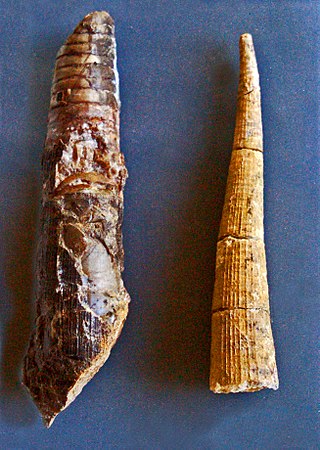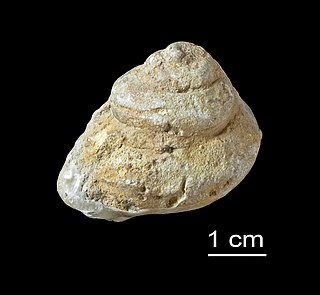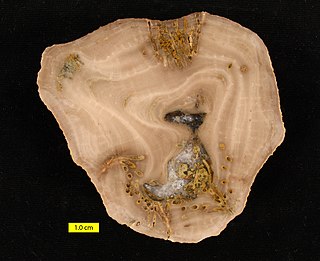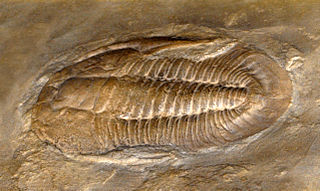
Pytine is an extinct genus of asaphid trilobites. Species lived during the later part of the Arenig stage of the Ordovician Period, approximately 478 to 471 million years ago. Various species are found in the Svalbard, Valhallfonna Formation, Olenidsletta, Member, of Spitzbergen, Norway, the Megistaspis (Paramegistaspis) planilimbata Zone of the 'Shumardia Shale' of Sweden, Jujuy Province, Argentina, early Arenig-aged strata of Jiangxi province, China, and Darriwilian-aged strata in Western Hunan province, China. The type species, P. graia, has seven thorax segments, and lacks the rapier-like glabellar spine, that occurs in many other raphiophorids. The Chinese species, by contrast, have only six thoracic segments. So far, only the type species, and one of the Chinese species, P. laevigata, are known from complete specimens.

Selenopeltis is an extinct genus of odontopleurid trilobites in the family Odontopleuridae.

Dipleura is a genus of trilobites in the order Phacopida. It was described by Green in 1832, and the type species is Dipleura dekayi. The type locality was in the Hamilton Group in New York.
Jangziceras is a genus of fossil nautiloid cephalopods from the Middle Silurian of southern China belonging to the Orthocerida incertae sedis, its familial association undetermined. The type is Jangziceras sichuanense Lai Chai-Geen. Its description falls within the characters of the Orthocerida.

Kionoceras is an extinct nautiloid cephalopod genus included in the orthocerid family Kionoceratidae with scattered worldwide distribution from the Middle Ordovician to the Lower Permian. Kionoceratids are orthocerids with prominent longitudinal ornamentation on their shells, sometimes augmented by secondary transverse ornamentation. Orthocerids are, of course, prehistoric nautiloides with generally straight and elongate shells, mostly with central or subcentral siphuncles.
Hoeloceras is an extinct orthoconic nautiloid cephalopod from the upper Ordovician, generally included in the Actinocerida. Nautiloids are a subclass of shelled cephalopods that were once diverse and numerous but are now represented by only a couple of genera, Nautilus and Allonautilus.
Zittelloceras is an extinct genus of nautiloids from the order Oncocerida which are among a large group of once diverse and numerous shelled cephalopods, now represented by only a handful of species.
Westonoceras is an extinct nautiloid genus from the Discosorida that lived during the Middle and Late Ordovician that has been found in North America, Greenland, and Northern Europe. It is the type genus for the Westonoceratidae
Paradnatoceras is an extinct straight-shelled cephalopod genus that lived in what would become China during the Ordovician from 478.6 to about 461 mya, existing for approximately 17.6 Ma.

Megistaspis is a genus of trilobites in the order Asaphida and family Asaphidae.

Planiscutellum is a genus of trilobites in the order Corynexochida family Styginidae. These trilobites were nektobenthic detritivore. They lived in the Silurian period in the upper Ludlow epoch, from 422.9 ± 1.5 to 418.7 ± 2.8 million years ago.

Strophomena is a genus of brachiopods belonging to the order Strophomenida family Strophomenidae, named by Rafinesque in 1824. They were stationary epifaunal suspension feeders.

Spirifer is a genus of marine brachiopods belonging to the order Spiriferida and family Spiriferidae. Species belonging to the genus lived from the Middle Ordovician (Sandbian) through to the Late Triassic (Carnian) with a global distribution. They were stationary epifaunal suspension feeders.

Holopea is an extinct genus of fossil sea snails, Paleozoic gastropod mollusks in the family Holopeidae.
Gangshanoceras is a fossil nautiloid cephalopod genus included in the orthocerid family Proteoceratidae. It has been found in Ordovician rocks dated from about 478.5 to 468 Ma in China, and from rocks dated slightly younger, about 468 to 461 Ma in Argentina. It has five described species. The type is Gangshanoceras jurongense.

Amplexopora is a genus of bryozoans of the family Amplexoporidae, known in the rock record from the Ordovician to the Permian periods. Species belonging to this genus were stationary epifaunal suspension feeders. Their colonies showed a very great variety in shapes.

Saukiella is a genus of trilobites of the Saukiidae family.

Parabarrandia is a genus of trilobite of the Asaphida order. These fast-moving nektonic carnivores lived in the Ordovician period.

Panderia is a genus of trilobites in the order Corynexochida.
Utahconus is an extinct genus of conodonts.












